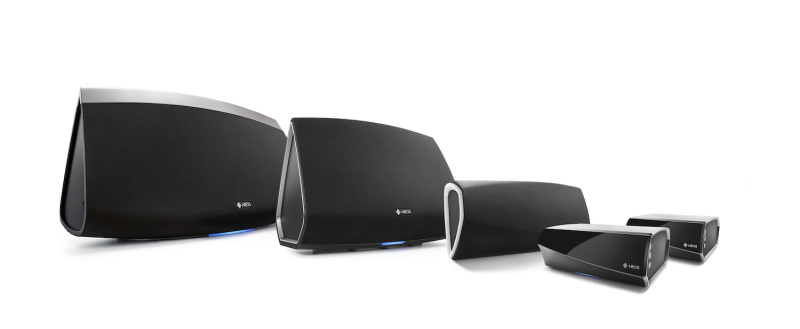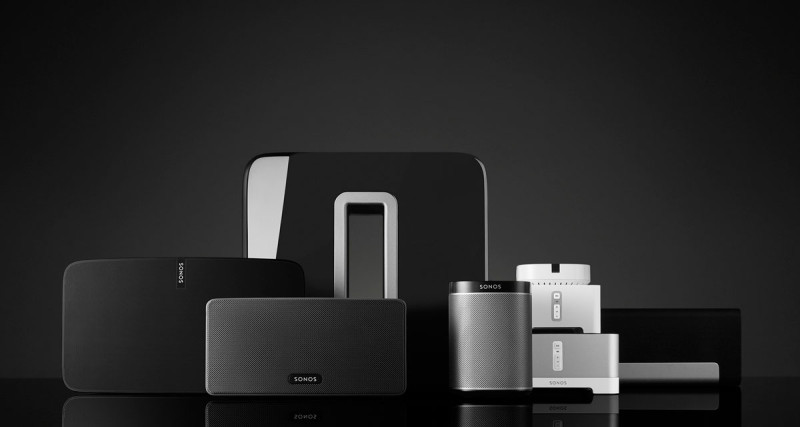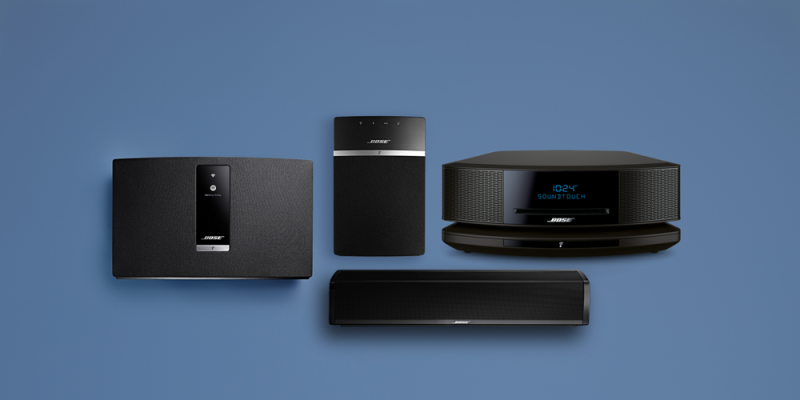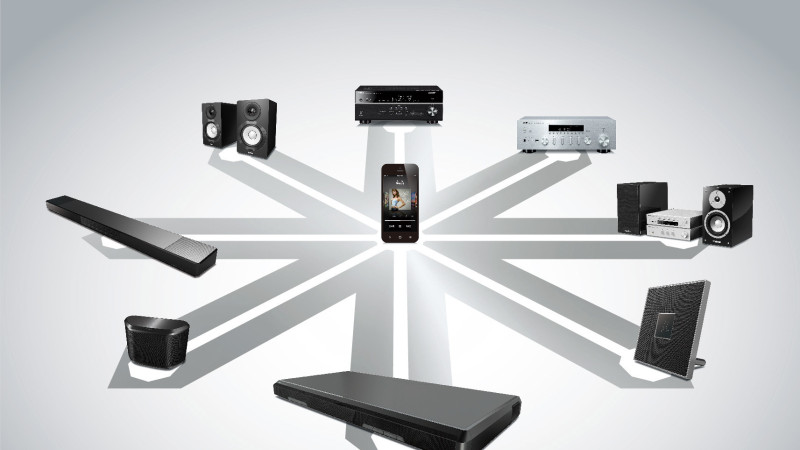Special: Multiroom Systems Compared

Multiroom audio – in other words, distributing music to different rooms – is actually not a new phenomenon. Bose, Revox, and B&O already had corresponding "music distributors" in their range back in the eighties, and systems designed and installed by experts have existed even longer. All these early approaches have in common that they distributed a purely analog music signal via conventional copper cables. The effort required for installation was accordingly high, and if you hadn't thought about cable channels during new construction or the last major renovation, retrofitting was practically impossible.
Modern multiroom is wireless
With the spread of network technology in our homes, and especially the widespread adoption of wireless technology like Wireless LAN (WLAN), there are now completely different possibilities to make music available elegantly and conveniently in multiple rooms. One of the first to recognize this trend was a small American startup, which presented the first wireless multiroom system as early as 2005. And when they also integrated a small, rebellious music provider called Napster, so users could have practically any song in the world available on demand at any time, the triumph of the Americans was unstoppable. We're talking, of course, about Sonos, who not only developed this market but also dominated it unchallenged for a long time. Naturally, since then, other companies have jumped on this obvious (and lucrative) trend as well. Even the usually rather slow-moving mills of the "classic" hi-fi manufacturers have now started turning, so the market offers a wide range of interesting alternatives to Sonos. The selection is so large that it's not always easy to keep track and make the right decision. All the more surprising, then, that there are hardly any serious comparisons of current systems in the mainstream media. So we decided to take matters into our own hands and put together the most important facts about the most widespread systems.
The comparison
For this comparison, we took a closer look at the following systems: Yamaha MusicCast, Bluesound, Heos by Denon, Sonos, and Bose SoundTouch. And, yes, four of these five systems are part of our program, which is certainly no coincidence. After all, we give careful thought to which products and solutions we add to our range. So it's no surprise that we have four of the most important systems on the market in our portfolio. Especially since these four systems each have very different strengths and weaknesses, so they complement each other quite sensibly in our range by covering various areas of application. The comparison, and especially the overview tables further down, are based essentially on our own experience with the individual systems as well as on publicly available product information. In some cases, we wanted to dig a little deeper and asked the manufacturers for additional information, such as latency times or the audio quality of wireless transmission. Unfortunately, not all providers could or wanted to answer our questions; this is noted accordingly in the tables.
One system for everyone? Not really ...
As is so often the case, and therefore not surprisingly, our comparison has shown that the famous "jack of all trades," that is, one solution for all requirements and customers, does not exist. Rather, all of the multiroom systems considered here have clear strengths and weaknesses that make them more or less recommendable for certain uses. You can find these details in the overview tables at the end of the article and form your own opinion about which solution suits you best. For everyone who finds that a bit too much work, the following summaries of the individual systems are intended. And of course, the AUDITORIUM team in Hamm, Münster, or Hamburg is always available for detailed advice on the topic.
Multiroom systems at a glance
Yamaha MusicCast
It almost seemed as if one of Japan's most traditional hi-fi manufacturers had completely missed the current multiroom trend. And that's despite Yamaha having already introduced a server-based, wireless music system called MusicCast in 2003, which was far ahead of its time and therefore unsuccessful. But when the Japanese revived the name at IFA 2015, the specialist world was amazed. Because obviously, they hadn't just been sitting idle in Hamamatsu, but had been developing diligently. The most important difference between MusicCast and practically all other multiroom systems is the fact that it is not, in the strict sense, a standalone system. Rather, the MusicCast technology has been integrated from the outset into numerous "conventional" products, from classic stereo amplifiers and AV receivers to soundbars and the attractive clock radio RESTIO ISX-80. There are also individual components, such as the compact speaker WX-030 or the stereo speaker pair NX-N500, so that smaller systems can also be easily realized with MusicCast. No fewer than 26 MusicCast-equipped products were available at launch, and this year the range will be expanded considerably. Another special feature of the MusicCast solution is the fact that all MusicCast devices can be both source and receiver at the same time. This may sound unspectacular at first, but it opens up fascinating possibilities when you take a closer look. Every MusicCast device in the system automatically makes all locally connected sources available to the network, so they can be accessed from anywhere. The FM tuner of the kitchen radio is thus available throughout the house as a music source, just like the external Blu-ray player or the set-top box connected to the AV receiver. This creates such a variety of possible combinations that even a halfway complete listing would go beyond the scope of this overview. But anyone who has ever had to urgently use the bathroom during an exciting soccer game will appreciate the ability to "take" the TV sound into another room ... And finally, MusicCast offers another unique feature: every MusicCast device can receive AND transmit Bluetooth. This means you can use an existing Bluetooth headphone wirelessly anywhere in the house to listen to music from any source. MusicCast is by far the most comprehensive and flexible system in this comparison and therefore the first choice for anyone who wants convenient multiroom comfort combined with real stereo and home theater systems. At the same time, however, this approach is the system’s biggest disadvantage. If you only want to listen to Spotify wirelessly in two or three rooms and don’t care about "big" systems with separate speakers, Yamaha's range is limited to a maximum of two or three devices. Further information is available at the AUDITORIUM.
Bluesound
Bluesound, like NAD and PSB Speakers, belongs to the Lenbrook Group and is therefore distributed in Germany (like NAD) by Dynaudio. Bluesound’s approach is clearly focused on the best possible sound quality; as the only system in the comparison, Bluesound already supports MQA as well as true hi-res streaming for all devices in multiroom operation (with MusicCast and Heos, for example, only the main source receives a true hi-res signal, all other devices in the network receive only a 48kHz/16bit downmix. With Sonos, wireless transmission is generally limited to 48kHz/16bit.) Whether it even makes sense to play a hi-res signal on extremely compact speakers like the Bluesound products is a topic for another discussion. The fact remains, however, that the stylish and well-crafted Bluesound speakers sound exceptionally good with any source. Consistently, Bluesound integrates more high-quality music services with Qobuz, HD Tracks, and HiresAudio than any other multiroom system. With the wireless integrated amplifier Powernode 2 and external speakers connected to it, Bluesound can make even better use of the quality advantage of transmission. And for anyone who still needs to archive their CD collection but doesn’t want to use a computer, the ripping server Vault 2 with built-in drive and automatic music recognition/management is a decisive argument. Bluesound is therefore a very simple system with a manageable but sensible variety of products and a clear focus on high-resolution sound quality. Further information is available at the AUDITORIUM.
Heos by Denon

Sonos

Bose SoundTouch

Summary
As already mentioned at the beginning, there is no "one" multiroom system for every need, but there is now at least a suitable system for everyone. Things remain simple and affordable with Sonos, while Heos is a somewhat more expensive but also significantly higher-quality alternative. Bluesound takes sound quality up another notch compared to both and offers an interesting extra feature with the Vault 2 ripping server. Yamaha's MusicCast is most deeply integrated into the "real" hi-fi and home theater world and is primarily aimed at those who want to combine modern and convenient multiroom with the quality and appeal of classic systems. Of course, this comparison is only a snapshot in time. If Denon brings the announced AV receivers with Heos, the cards will definitely be reshuffled in the MusicCast/Heos comparison. And Yamaha also has big plans for MusicCast, about which we unfortunately cannot report here yet ...
Multiroom systems in comparison: Equipment and features
(On smaller screens, you may need to scroll left and right within the table to see all the content.)
General
Product selection
Music services
App

